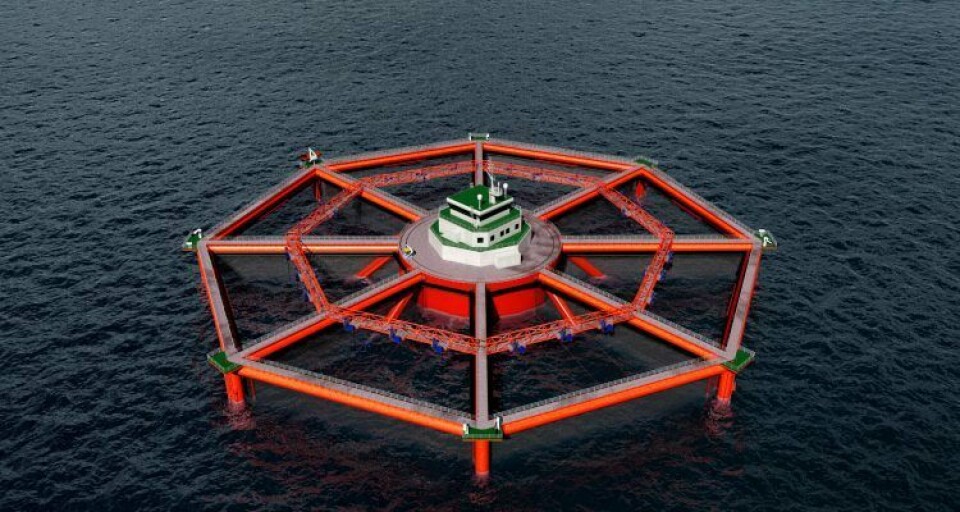
Ocean Farm’s big brother will go ahead says SalMar
SalMar-owned MariCulture AS is to proceed with plans for a huge open-sea salmon farm after winning permission to grow 6,240 tonnes of biomass.
The Smart Fish Farm that will have twice the capacity of SalMar’s Ocean Farm 1 and has an estimated price tag of NOK 1.5 billion (£134 million).
MariCulture applied for 16 Norwegian development licences – which allow companies to offset the cost of research and development by enabling them to grow more salmon - and was given eight.
‘An important handshake’
SalMar said the Fisheries Directorate’s decision to grant eight licences had provided “an important handshake to leading Norwegian aquaculture and marine technical expertise environments, which for the first time will make it possible to establish farming in the open sea”.
The Smart Fish Farm concept is based on a semi-submersible steel structure consisting of a wide centre column and a surrounding framework mainly with circular cross-sections. The framework stretches supports netting panels that provide eight separate chambers.
The total aquaculture volume of the chambers is 510,000m³ when the operating depth is 45m. According to the company, there will be room for two permits of 780 tonnes per chamber, so the Smart Fish Farm will be half-full.
Never tried before
SalMar intends to use the Smart Fish Farm in a deep-water mooring in the Norwegian Sea off the coast of Trøndelag. SalMar has extensive industrial infrastructure in the region.
In a press release SalMar, co-owner of Scottish Sea Farms, said: “A considerable amount of work remains to be done in further engineering before the new large cage can be built and put into use. The goal is to establish the unit in the open sea off the Trøndelag coast, in heavily exposed sea areas.
“Something similar has never been tried before, and an important aspect will be to test the interaction between technology and biology in the exposed environment.”

Similar but different
Although the Smart Fish Farm looks similar to Ocean Farm 1, it differs significantly in some areas. It will withstand substantially more exposed areas and have twice the capacity. But the main difference is that in the central closed column will be equipped for processing fish, control and management of the unit, as well as an advanced system for transporting fish related to the eight surrounding production chambers.
SalMar said MariCulture will now put in all the necessary resources to realise the Smart Fish Farm, in close cooperation with leading Norwegian expertise environments.























































